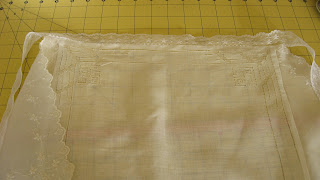 |
| Victorian Whites |
I love that fresh air smell of laundry that has been line dried! I hand wash and line dry all my vintage linens.
If the linens don't have any spots or stains that I'm trying to remove I just hand wash with a mild detergent, rinse thoroughly (I usually rinse at least twice) and line dry.
When I find linens at the thrift store or a yard sale they usually have a few spots or have yellowed. First
I soak them in laundry detergent with a little oxygen booster added.
After a few hours I rinse them thoroughly and line dry. If any spots remain I put lemon juice and salt on the
stained areas and hang in the sun for several hours. I rinse thoroughly and line dry again.
If
any stains remain my next step is non-chlorine bleach added to the soaking
water. I try to stay away from chlorine bleach as it can break down the
fragile fibers of the linens and cause little holes to appear in the
worn areas.

When
you have finally removed all the stains (some stains just won't come
out) and your linens are dry, it is time to iron them. I starch and
iron all my linens to give them a nice smooth, crisp feeling. If you don't want to use starch you can mist with water and then iron. Now they
are ready to either sell or add to my linen closet!
 | |||
The Scoop at Cedarhill Ranch
Blissful White Wednesday at Timewashed
Shabbilicious Friday at Shabby Art Boutique
















